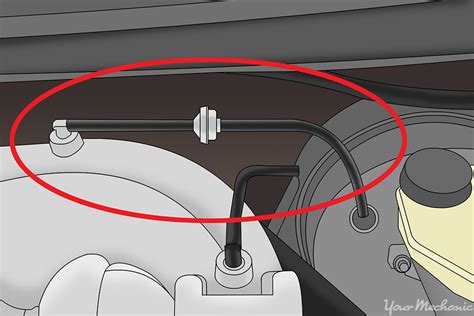Mastering the Brake Booster Check Valve Test: A Comprehensive Guide
The brake booster check valve plays a crucial role in your vehicle's braking system, ensuring consistent and reliable braking performance. A malfunctioning check valve can lead to spongy brakes, reduced braking power, and even brake failure. Understanding how to test this vital component is essential for maintaining vehicle safety and preventing costly repairs. This comprehensive guide will walk you through the process of testing your brake booster check valve, equipping you with the knowledge to diagnose problems and maintain your vehicle's braking system effectively.
What is a Brake Booster Check Valve?
Before diving into the testing process, let's understand the function of the brake booster check valve. This small but critical valve is located within the brake booster, a vacuum-assisted device that amplifies the force applied to the brake pedal. The check valve's primary function is to maintain vacuum pressure within the booster. It prevents air from leaking back into the engine's intake manifold when the brake pedal is released, ensuring that the booster is ready to assist with braking the next time the pedal is depressed. A faulty check valve compromises this vacuum seal, leading to performance issues.
Symptoms of a Faulty Brake Booster Check Valve
Several symptoms can indicate a problem with your brake booster check valve. These include:
- Spongy or soft brake pedal: This is often the most noticeable symptom. The pedal feels less firm and requires more effort to stop the vehicle.
- Reduced braking power: A malfunctioning check valve reduces the assistance provided by the booster, resulting in less effective braking.
- Brake pedal slowly returning to the top after release: This indicates a slow leak of vacuum pressure.
- Difficult to brake after engine shutdown: If the vacuum is lost completely, you’ll notice the brakes becoming significantly harder to press after turning off the engine, as there's no booster assistance.
How to Test the Brake Booster Check Valve
Testing the brake booster check valve involves a few simple steps, usually requiring basic hand tools and a vacuum gauge (although visual inspection and a simple vacuum test can often reveal problems).
1. Visual Inspection
Begin by visually inspecting the brake booster and its associated vacuum lines for any signs of damage, cracks, or leaks. Look for loose connections, worn hoses, or any obvious physical damage to the booster itself. Addressing these issues first can prevent misdiagnosis.
2. Simple Vacuum Test (No Gauge Needed)
This test involves disconnecting the vacuum line from the brake booster. With the engine running, quickly cover the end of the disconnected vacuum line with your finger. If you feel a strong suction, the check valve is likely functioning correctly, maintaining the vacuum. If you feel little to no suction, it's a strong indicator of a problem. This simple test is quick and informative but isn’t precise.
3. Using a Vacuum Gauge (For Precise Measurement)
For a more accurate assessment, use a vacuum gauge. Disconnect the vacuum line from the brake booster. Attach the vacuum gauge to the booster port and start the engine. The reading on the gauge should show a strong vacuum (typically between 18 and 22 inches of mercury). If the gauge shows a significantly lower reading or struggles to maintain vacuum, the check valve is likely faulty. Furthermore, if the gauge shows a high vacuum and then rapidly drops when the engine is turned off, this is often indicative of a leaking check valve.
H2: How Do I Know if My Brake Booster Needs Replacing?
A faulty check valve doesn't automatically mean the entire brake booster needs replacing. Often, the check valve itself can be replaced as a separate component. However, if the booster itself shows signs of damage or wear, or if multiple attempts to solve the vacuum issues reveal other underlying booster problems, replacing the entire brake booster might be necessary. Consult a professional mechanic for a thorough evaluation.
H2: What Causes a Brake Booster Check Valve to Fail?
Several factors can contribute to check valve failure. These include:
- Normal wear and tear: Over time, the valve's internal components can wear out, leading to leaks.
- Vacuum leaks in the system: Leaks elsewhere in the vacuum lines can put excessive stress on the check valve.
- Dirt and debris: Contaminants can clog or damage the valve.
H2: Can I Fix a Brake Booster Check Valve Myself?
Replacing a brake booster check valve is generally a relatively straightforward process, though it can be challenging depending on the vehicle's design. However, replacing the entire brake booster is significantly more complex, usually requiring specialized tools and expertise. If you're unsure about your abilities, it’s always best to seek professional help to avoid further complications. Improper repair could compromise your braking system and vehicle safety.
Conclusion
Mastering the brake booster check valve test is a valuable skill for any vehicle owner. By understanding the symptoms, testing methods, and potential causes of failure, you can effectively diagnose and address issues related to your braking system, ensuring the safety and reliability of your vehicle. Remember, if you're unsure about any part of this process, consulting a qualified mechanic is always the safest course of action. Your safety and the safety of others on the road is paramount.

